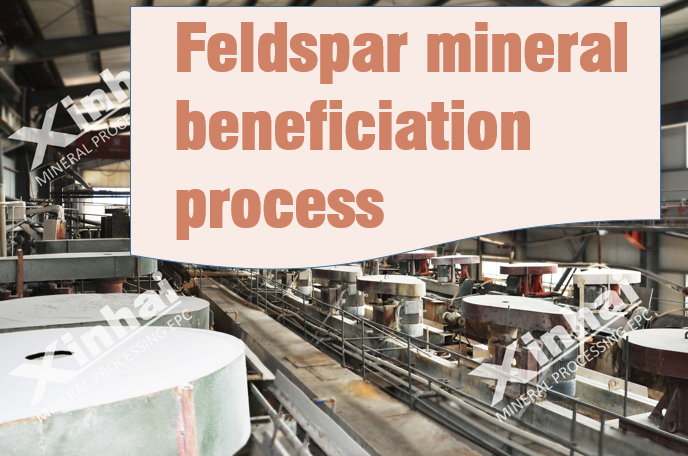Feldspar mineral beneficiation process
2024-09-30 Xinhai (1491)
2024-09-30 Xinhai (1491)
If you have any questions, please contact us through the following ways, we will give you more and better assistance!

Feldspar minerals, including potash feldspar, orthoclase, feldspar and microcline, are a type of potassium-containing aluminosilicate minerals. These minerals usually appear milky white and have a glassy luster, but they may also be dyed into different colors due to impurities, such as brown, light yellow, flesh red, or even off-white or light green. Potassium feldspar has become an important non-metallic mineral resource due to its wide application in glass, ceramics and other industries.
Feldspar minerals produced in different deposits have significantly different properties and symbiotic impurities, so different mineral processing processes need to be used to achieve effective separation.

Pegmatite-type feldspar: The feldspar produced from these deposits is usually of higher quality. The mineral processing process includes hand selection, crushing, grinding and screening and classification. Because this process fails to remove iron minerals, its products may not meet the requirements of industries such as ceramics. In addition, the efficiency of the wheel mill used in the crushing process is low, resulting in backward overall production technology and low product quality.
Weathered granite type feldspar: In this type of deposit, the feldspar beneficiation process includes crushing, grinding, screening and classification, followed by flotation to remove iron and mica, and finally separation of quartz and feldspar through flotation. The feldspar produced by this process is of good quality and can meet the needs of ceramics, glass and other industries, but the mineral processing cost is high and may cause certain pollution to the environment.
Aplite-type feldspar: The feldspar in this type of deposit usually contains mica and sometimes iron. The mineral processing process includes crushing, grinding, classification and then magnetic separation to remove iron. This process enables the production of high-quality feldspar products that meet the needs of different users. Magnetic separation is divided into dry and wet methods. Dry magnetic separation has a low iron removal rate but lower cost, while wet magnetic separation requires filter press and drying equipment, which makes the process more complicated and the production cost higher.
Feldspathic placers: For this type of deposit, the beneficiation process usually involves water washing to remove the mud and screening classification, or the removal of quartz by flotation. Flotation is a widely used chemical method for separating feldspar and quartz. This method utilizes the difference in surface properties of feldspar and quartz to separate them through flotation reagents.
In summary, feldspar minerals from different deposits need to select appropriate beneficiation processes based on their specific properties and symbiotic impurities. With the reduction of high-quality feldspar resources, the optimization and innovation of mineral processing processes are particularly important to ensure that the quality of feldspar products can meet the needs of industrial applications while reducing the impact on the environment.